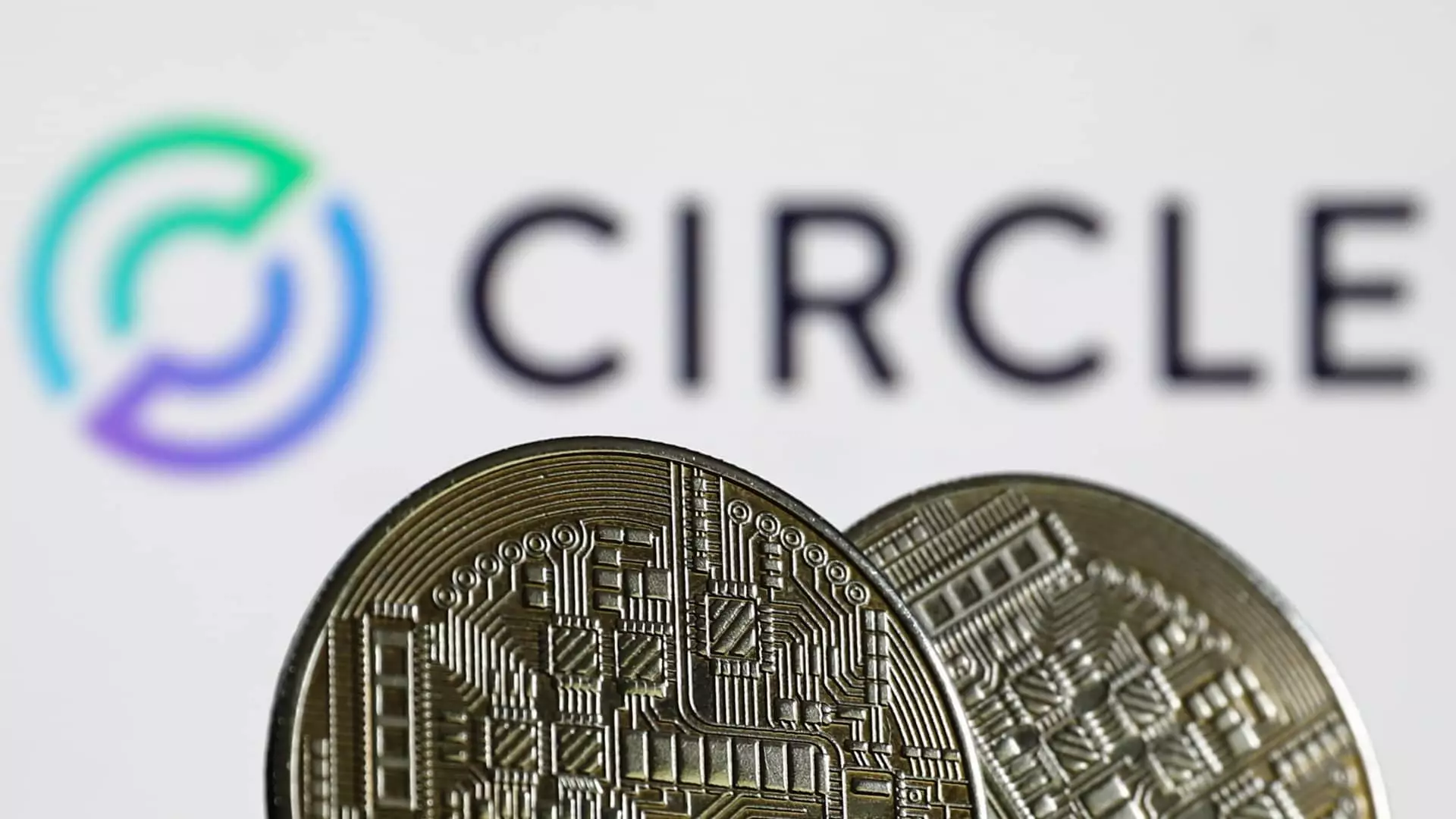The anticipation surrounding Circle’s initial public offering (IPO) has reached a fever pitch as the issuer of the USDC stablecoin embarks on a daring financial journey. Seeking to raise approximately $624 million at a valuation of roughly $6 billion, the company’s move reflects a calculated ambition shared by few in an otherwise tumultuous landscape for cryptocurrencies. Led by the resolute leadership of CEO Jeremy Allaire, Circle’s IPO decision signifies not just a chance for monetary gain but also an assertion of confidence in the future of digital currencies—particularly those tied to fiat realities.
From the onset, the financial parameters speak volumes. Selling 24 million shares, of which 9.6 million come from the company itself and 14.4 million from existing shareholders, Circle has set an ambitious price range between $24 and $26 each. This approach, while bold, also involves certain risks, particularly considering the broader market sentiments that impact investor confidence. Cracks in investor enthusiasm can appear quickly in crypto markets, which are notoriously volatile. Yet, the potential for a valuation bump to around $6.7 billion—including options—paints a picture of a firm unabashedly banking on its future worth.
Potential Backing and Implications
In a particularly interesting twist, the participation of notable investors such as Cathie Wood’s ARK Investment Management, which expresses interest in purchasing up to $150 million of shares, adds a layer of credibility to Circle’s proposition. However, relying on heavyweights in investment management could pose a double-edged sword. While it signals confidence, it also enhances scrutiny. With ARK’s reputation at stake, there’s little leeway for underperformance, and the enduring desire for innovation in the crypto space means any missteps could resonate far beyond mere stock prices.
Additionally, the regulatory landscape surrounding cryptocurrencies looms large as the U.S. Senate is edging toward passing its first piece of crypto legislation, focusing on stablecoins specifically. The Biden administration, and even the Trump contingent expressing urgency for crypto regulation, layers complexity onto Circle’s financial road ahead. Regulatory conditions can either serve as a springboard for growth or an anchor dragging the industry back. For Circle, the prospect of concrete legislative frameworks is both a boon and a barrier—one that could consolidate their market influence or expose them to heightened competition and increased operational constraints.
A Critical Analysis of Market Positioning
Circle’s USDC currently commands around 27% of the total stablecoin market, trailing behind Tether’s dominating 67%. While this may initially appear as a weakness, Circle has experienced a commendable 40% market cap growth this year alone—outpacing Tether’s own 10%. This trend hints at a rising tide of confidence and potential demand for USDC, particularly as digital currencies gain traction with larger financial institutions. More than just a trading instrument, USDC’s rapid adaptation as a method for swift dollar transfer presents significant opportunities for banks and fintechs, marking them as critical stakeholders in this evolution.
However, it’s essential to be cautious. While USDC’s utility in cross-border transactions can bolster its appeal, tethering the stability of digital currencies to fiat financial systems can be problematic. Are we inadvertently stifling innovation under the guise of stability? The very essence of cryptocurrencies was birthed from a desire for decentralization and resistance against conventional financial structures. The paradox remains: can stability be achieved without compromising the underlying principles that attract a segment of investors to this evolving sector?
Ripple Effects on Competing Ventures
Circle’s IPO will inevitably impact Coinbase—one of the prominent exchanges in the crypto arena. With a 50% revenue-sharing agreement in place and Coinbase making 100% of the interest earned by USDC products, the stakes are monumentally high. With Coinbase’s CEO, Brian Armstrong, positing a “stretch goal” to elevate USDC as the leading stablecoin, an ambitious strategy combines innovation with a touch of audacity. Yet, this interdependent relationship brings forward questions of market sustainability: How will Coinbase navigate increased competition? If Circle succeeds, will it dwarf Coinbase’s other offerings or enhance its market position?
As the IPO countdown begins, investors await the ripple effects would in anticipation. Circle’s journey is emblematic of larger shifts in the crypto landscape, where established players and innovative upstarts will routinely clash. For now, the question lingers: as Circle steps into the public eye, can it maintain its composure amidst the unpredictability that is the hallmark of the crypto modicum?

